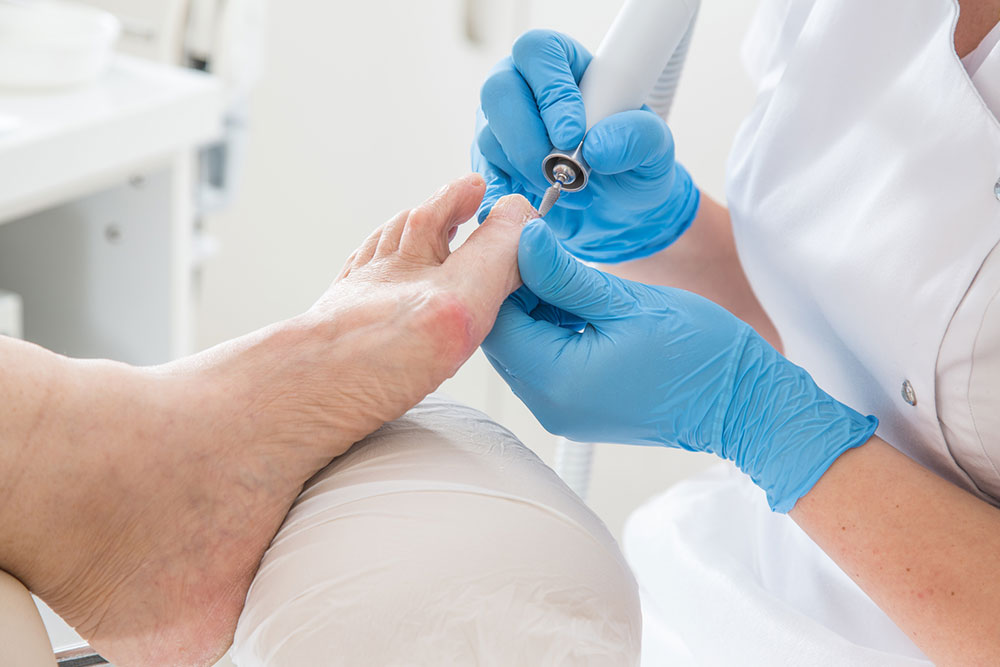A Guide to Using Hydrogen Peroxide For Treating Toenail Fungus
It is quite hard to deal with nail fungus. It starts off as a yellow blemish and spreads to the entire nail if it is left untreated. It can cause discomfort, pain, and tenderness. Many home remedies can help you treat this issue, and the most popular item among them is hydrogen peroxide.
Why is hydrogen peroxide effective at treating toenail fungus?
Hydrogen peroxide is a household item that is applied to sanitize minor injuries and wounds.

Depending on the severity of the infection, you can restore your nails within weeks or months with constant use of hydrogen peroxide. To prevent further fungal infections, it is advised to keep practicing this therapy for a few months even after your nail has recovered. Even though there aren’t many scientific studies proving the effectiveness of hydrogen peroxide for treating toenail fungus, several people have tried and tested this home remedy.
Here are some treatments for toenail fungus that use hydrogen peroxide:
- Soak your feet in a hydrogen peroxide solution
You will require 3% hydrogen peroxide, distilled water, plastic tub, and tissues for this method. Stir equal amounts of hydrogen peroxide and distilled water in a plastic tub. Make sure that the hydrogen peroxide that has a concentration of 3% or less, otherwise it may damage your skin. Dip the infected nails in this solution and wait for 30 minutes until they are soaked. Wipe and dry your nails with a tissue. Make sure that the affected nails are dry before you cover them. Repeat this method every day, even after the problem subsides. Getting relief from nail fungus is not that simple and will require a lot of patience and persistence.
Why this works
This hydrogen peroxide therapy for toenail fungus is effective because when you soak the affected nails in the hydrogen peroxide, the oxygen level increases which destroys the fungus.
- Vinegar and hydrogen peroxide for treating toenail fungus
For this toenail fungus therapy, you will need 3% hydrogen peroxide, white vinegar or apple cider vinegar, distilled water, plastic tub, and dry tissues. Combine equal amounts of distilled water, hydrogen peroxide, and vinegar in a plastic tub. Dip the affected toenails and let them soak them for 10 minutes. Wipe your nails with a tissue. Make sure to dry the nails before covering them. On the next day follow the same steps, but instead of hydrogen peroxide, use equal amounts of vinegar and distilled water. Until the problem subsides, keep alternating between hydrogen peroxide and vinegar.
This method is better at treating toenail fungus than the former method as under certain conditions, mixing hydrogen peroxide and vinegar can form peracetic acid, which is a caustic chemical that yields undesirable results. You have to repeat this therapy every day till the issue subsides.
Why this works
Vinegar is an acidic solution that reduces itchiness and restores the pH balance of your skin and nails. These characteristics assist the liquid in creating an unsuitable environment for the fungi to develop, thus killing off the infection. Apple cider vinegar helps to decrease the inflammation and diminishes the pain caused by toenail fungus.
- Baking soda and hydrogen peroxide
You will need half a cup of baking soda and Epsom salt, 4 cups of warm water, ¼ cup of white vinegar, one cup of 3% hydrogen peroxide, a plastic tub, and dry tissues. Mix the baking soda, hydrogen peroxide, vinegar, Epsom salt, and water in a plastic tub. Soak the nails in this solution and wait for 10 minutes. Wipe your nails with a dry tissue and make sure they are dry.
Why this works
Baking soda comprises antifungal features that limit the growth of fungus. This hydrogen peroxide therapy for toenail fungus benefits your skin by balancing the pH levels while killing the fungus.
Side effects of hydrogen peroxide treatments for toenail fungus
Hydrogen peroxide may irritate your skin and cause redness, stinging, or mild itching. In some people, it dries the skin and results in cracked feet. This chemical may also cause your skin to peel. If you encounter any of these side effects, try using a solution that has a hydrogen peroxide concentration of less than 2%. You can dilute it further by adding more water. If the side effects still persist, consult a healthcare provider.
Toenail fungus isn’t a grave health problem. However, it can destroy the shape of your nails and cause discomfort as it lifts the nail from the nail bed. Don’t presume that the treatment will make your toenails like shown in advertisements. Nevertheless, if you adopt a regular habit of washing and drying your feet, and applying an antifungal remedy, you will see a definite improvement.

